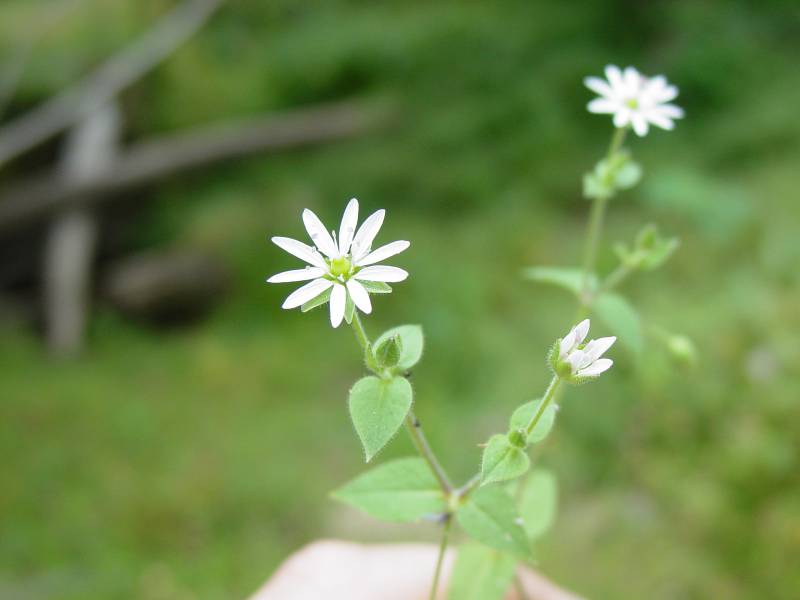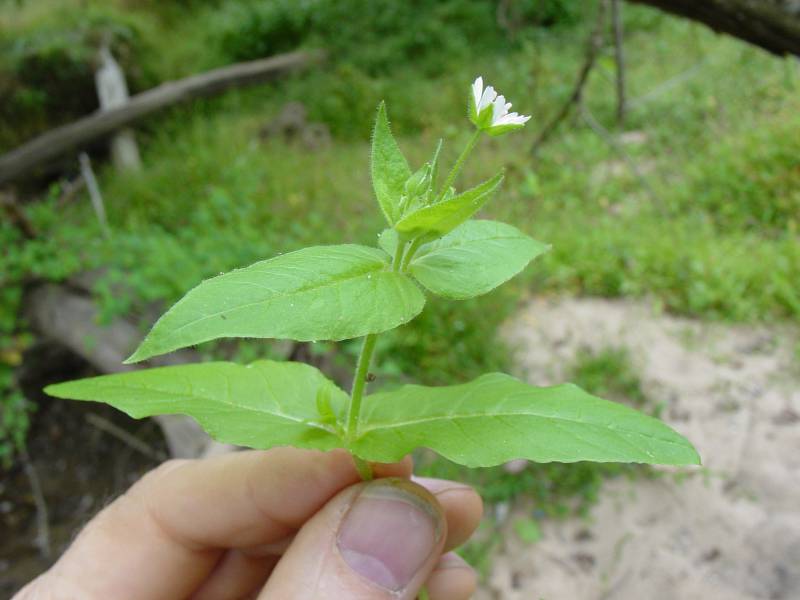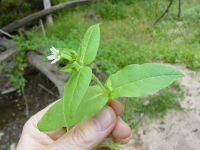Distribution: Occurring east of the Cascades crest in southeastern Washington; British Columbia to Oregon, east to Idaho and Montana; also in central and eastern North America.
Habitat: Stream banks, woods, marshes and wet meadows.
Flowers: June-October
Origin: Introduced from Europe
Growth Duration: Perennial
Conservation Status: Not of concern
Straggling, herbaceous perennial, the stems decumbent to ascending, simple or branched, up to 6 dm. tall, pubescent above.
Leaves opposite, ovate, the tip acute, the lower leaves petiolate, gradually reduced upward, becoming sessile above
Flowers solitary in the leaf axils, long petiolate; sepals 5, green, linear-oblanceolate; petals 5, white, deeply notched, about 7 mm. long, much longer than the sepals; stamens 10; styles 5.
Capsule globose-ovoid, opening by 5 valves.
Capsule
Publication: Methodus. 225. 1794.
Cerastium aquaticum L.
Stellaria aquatica (L.) Scop. [HC]
PNW Herbaria: Specimen records of Myosoton aquaticum in the Consortium of Pacific Northwest Herbaria database
WA Flora Checklist: Myosoton aquaticum checklist entry
OregonFlora: Myosoton aquaticum information
E-Flora BC: Myosoton aquaticum atlas page
CalPhotos: Myosoton aquaticum photos






